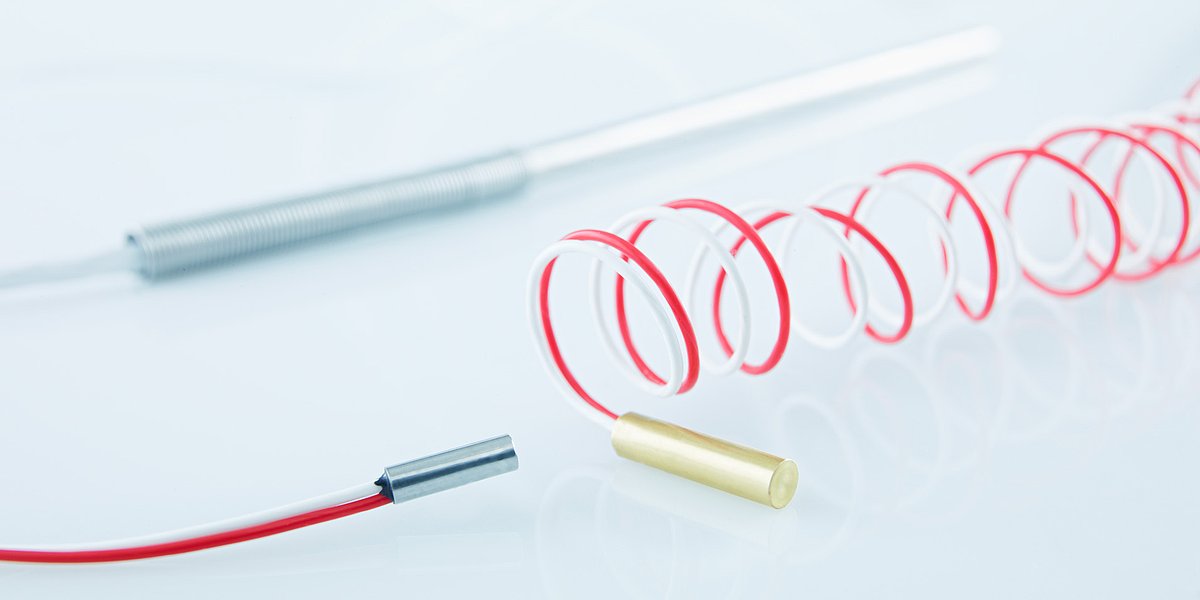At a glance
Assembly variants
KTY with metal sleeve and roll squeeze
Here, the measuring resistor and the feed are connected firmly to the sleeve by beading. The advantage of the roll squeeze is that there is a continuous seal of the internal measuring resistor. That means that these temperature sensors are better protected against external environmental influences, such as penetration by condensation.
KTY with metal sleeve and casting
In the casting process, the measuring resistor incl. feed is installed in the sleeve head with a casting compound. Different casting compounds are used depending on the sensor type and application. Duroplasts (epoxy resins), elastomers (silicones) or quartz powder are used as standard. The sensor is thus even better protected against penetration by moisture or other liquids than when a roll squeeze is used.
KTY with cable shoe
Here, the measuring resistor and the feed are sealed in a cable shoe. This construction is especially suitable for surface temperature measurement, particularly where there is also a requirement for high voltage-resistant insulation and good thermal contact with the measuring point.
Download certificates
Certificates
ATEX (Deutsch)
pdf 226 KB
ATEX (Englisch)
pdf 215 KB
CCC
pdf 861 KB
IECEx 14.0058 U
pdf 297 KB
INMETRO
pdf 1 MB
EAC
pdf 2 MB
UL CSA
pdf 241 KB
Manuals
Deutsch
pdf 573 KB
Englisch
pdf 624 KB
Russisch
pdf 1 MB
Chinesisch
pdf 601 KB
Brasilianisch
pdf 337 KB
Attestation of conformity
Deutsch
pdf 66 KB
Englisch
pdf 62 KB
Brasilianisch
pdf 65 KB
Französisch
pdf 64 KB





